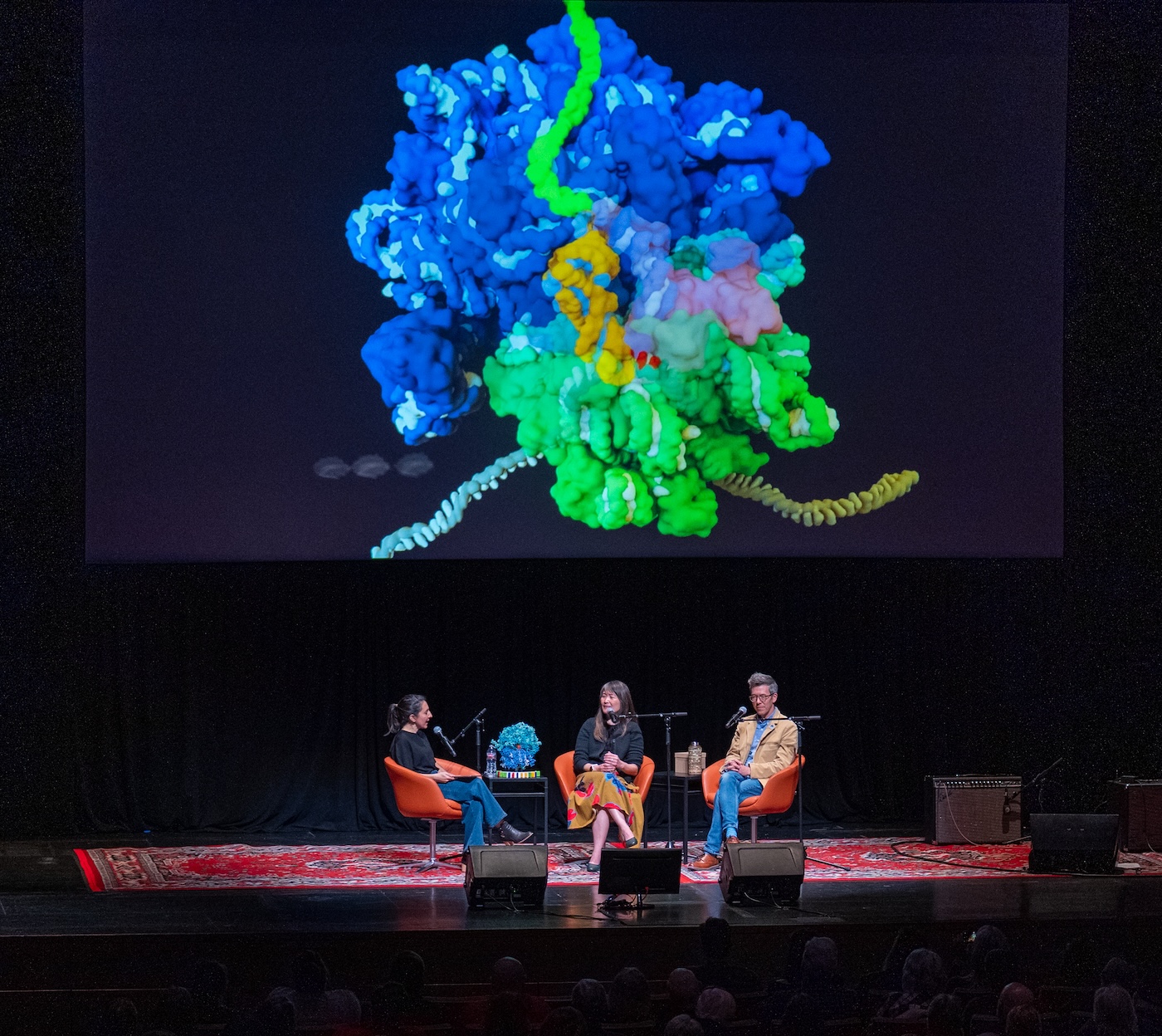How ‘Science Interpreters’ Make Hidden Science Visible
A cell animator and a museum designer tell us how they translate scientific findings into visual experiences.
Listen to Universe of Art on Apple Podcasts, Spotify, Google Podcasts, Stitcher, TuneIn or your favorite podcasting app.

Imagine you’re diving into a cell. You’re paddling around in the cytoplasm, you’re climbing up a mitochondria. If you’re having a hard time picturing this, that’s okay! There are professionals who do this for a living.
We wanted to learn more from expert science interpreters, who take the results section of a research paper and translate it into something tangible, like a 40-foot dinosaur skeleton or a 3D animation of cellular machinery too small to see.
At a live event in Salt Lake City in March, Host Flora Lichtman spoke with Dr. Janet Iwasa, head of the University of Utah’s Animation Lab and director of the Genetic Science Learning Center; and Tim Lee, director of exhibits at the Natural History Museum of Utah, about how they bring these out-of-reach worlds to life.
Universe of Art is hosted and produced by Dee Peterschmidt, who also wrote the music. Our show art is illustrated by Abelle Hayford. And support for Science Friday’s science and arts coverage comes from the Alfred P. Sloan Foundation.
Do you have science-inspired art you’d like to share with us for a future episode? Send us an email or a voice memo to universe@sciencefriday.com.
Dee Peterschmidt is a producer, host of the podcast Universe of Art, and composes music for Science Friday’s podcasts. Their D&D character is a clumsy bard named Chip Chap Chopman.